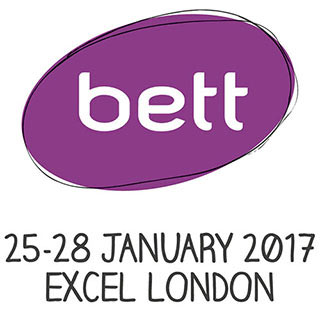
In a previously life I was a Secondary School Science Teacher, and I was privileged to work at a fantastic school (alongside some of the most innovative and enthusiastic teachers the UK has to offer). I know these teachers took their pedagogy seriously, and I was reminded of this dedication when I saw a few familiar faces at ‘the bett show’ this week. Bett is the former British Educational Training and Technology Show and showcases the use of information technology in education. Founded in 1985, it is held annually at the ExCeL centre in London, England. The mission statement of bett is ‘to bring together people, ideas, practices and technologies so that educators and learners can fulfil their potential’.
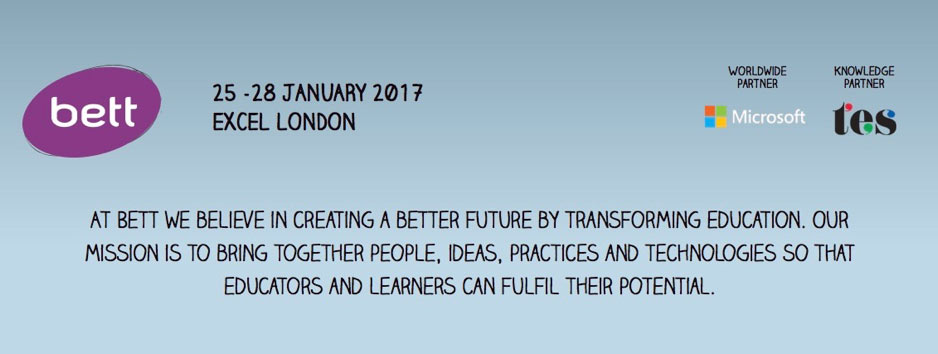
Transforming Education – The mission statement of the bett show
Each year I attend bett, but I do so these days whilst looking through a different pedagogical lens. I attend with the explicit aim of learning about how advances in information technology could be harnessed by science communicators to help enhance marine education. In this case, our Project Seagrass – Seagrass Education and Awareness (SEA) program.
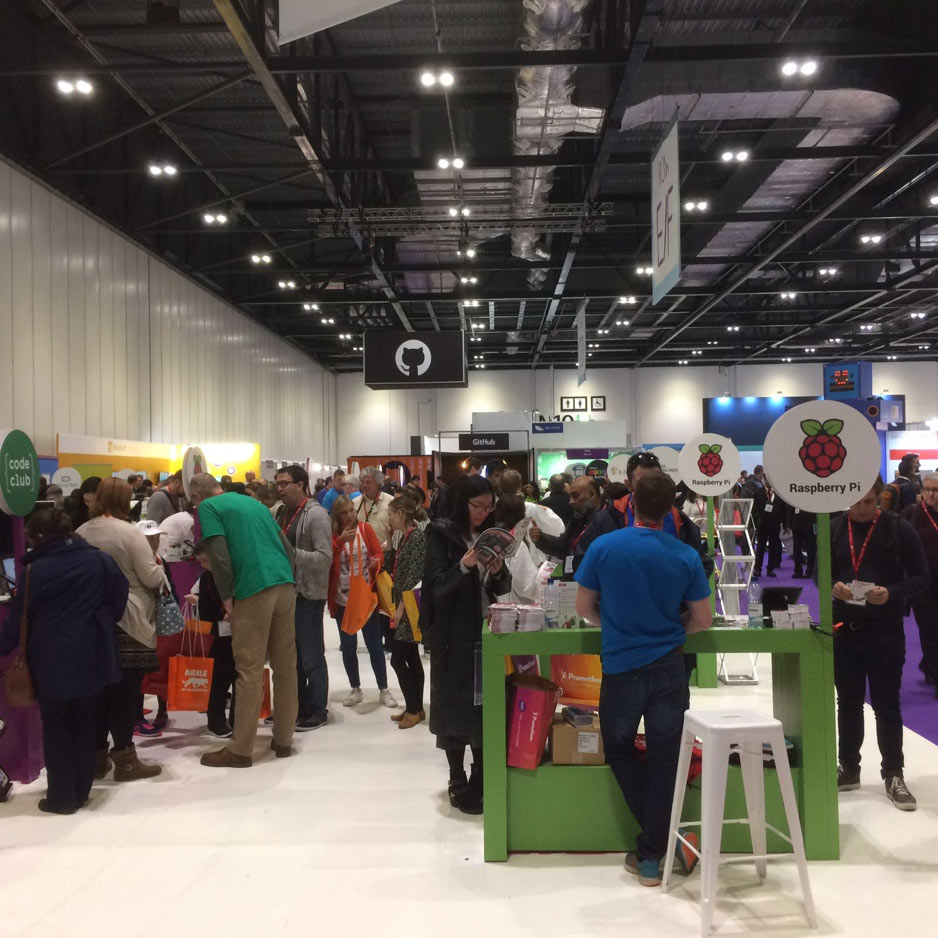
There are numerous small exhibitors offering a suite of novel technologies
To give you a flavour of the innovators that attend bett we should perhaps focus on a recent success story. One of the stand-out exhibitors of the past few years has been Raspberry Pi. The Raspberry Pi is a series of credit-card sized, single-board computers manufactured in Wales by the Raspberry Pi Foundation. Their mission statement is to promote the teaching of basic computer science in schools and in developing countries. Just this week Google has announced it is planning to bring artificial intelligence and machine learning tools to the Raspberry Pi… don’t panic though, there are still plenty of other options for complete beginners!
So was there anything could be useful for marine education at bett this year?
Well yes, quite a lot actually. Immersive interactive were demonstrating their immersive classrooms for primary, secondary and special education needs education. Their stand demonstrated how a combination of high-end graphics, sound effects and animations could transport a child from the classroom into an ‘atmospheric panorama’ of the chosen place; be that an ancient Egyptian tomb, a humid Rainforest, or in my head, a Seagrass Meadow bustling with life!
“‘It’s ‘not a teleport’, but at the moment it’s the ‘next best thing!’”
Another take on creating a virtual reality though technology is ClassVR, which manufacture virtual reality headsets designed specifically for use in schools. Whilst wearing this headset I was able to take a dive into the open ocean with a Great White Shark, a friendly fella who swam right out of the blue to come and check me out.
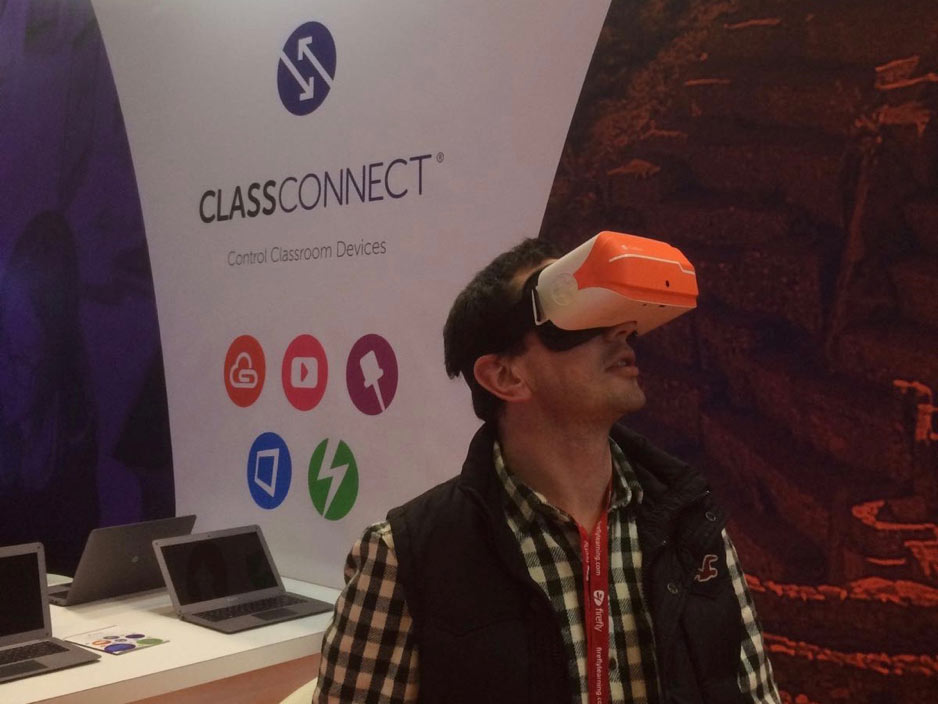
Virtual Reality in the Classroom
One of the interesting developments for me personally was Kudlian’s new service; they now offer Civil Aviation Authority licensed lessons to use drones in schools. At Project Seagrass we have used drones for mapping coastal habitats and the scope for scientific advancement using this newly accessible technology seems limitless at the moment!
In primary and secondary schools Kudlian propose using drones for;
• Literacy – creative writing using aerial video and photographs; writing control manuals
• Math – estimating and measuring heights, speed, distance travelled, time taken, angles, bearings
• Computing – drones can be programmed using mobile devices
• Geography – GPS logging, map reading, course planning
• Media Studies – aerial footage in videos and media work
• Physical Education – film matches and plays from different angles,
• PSHE – debate the ethics of using drones
and, of course, Science!
The final exhibitor that struck a chord with me this week was AIPTEK. Whilst not specifically targeting pedagogy, AIPTEK definitely strive to make mobile teaching easier by developing a number of ‘mobile projection’ products. I was particularly impressed with the Boombox Projector P800 (a HD Projector with 360° Sound-System). For those of us who spend time at Science Festivals, or on the road travelling to give talks (in sometimes small and remote places) this is an all-in-one portable system that projects a clear picture whilst offering a crisp sound. Perfect!
On a personal note, it was great to see ‘Hwb’ at bett this year! Hwb is a website and collection of online tools provided to all schools in Wales by the Welsh governement. It was created in response to the ‘Find it, Make it, Use it, Share it’ report into Digital Learning in Wales. The main site contains over 88,000 bilingual resources. In addition teachers and learners with accounts can sign in and access a range of other online tools and resources. Included in this is a school specific Learning Platform (Hwb+)
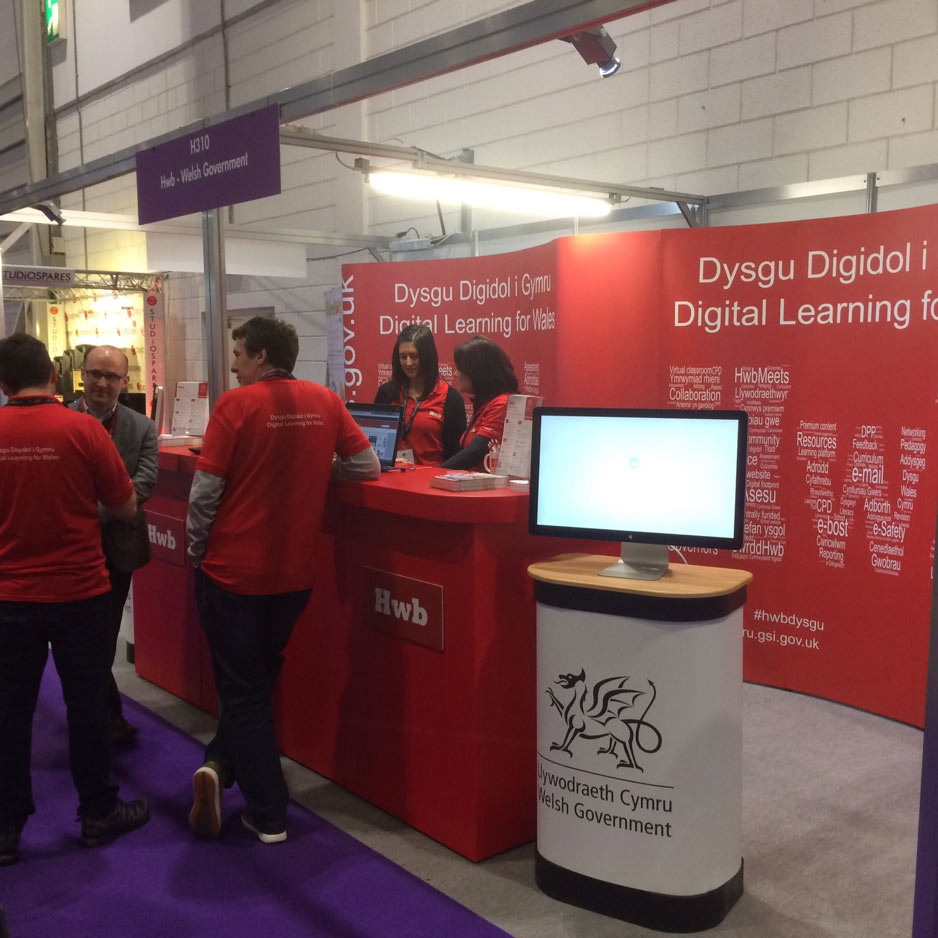
It was great to see a Welsh presence at bett 2017
At we believe that education is the best approach to generate both awareness and understanding of both seagrass and the marine environment. Please support us in delivering our work by sponsoring SJ on her Three Before Thirty martahon challenge!
Thanks and best fishes!
RJ

